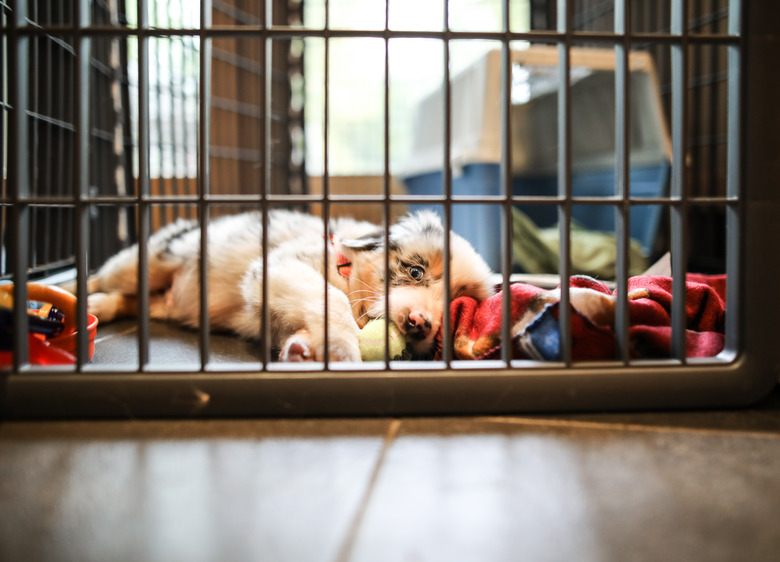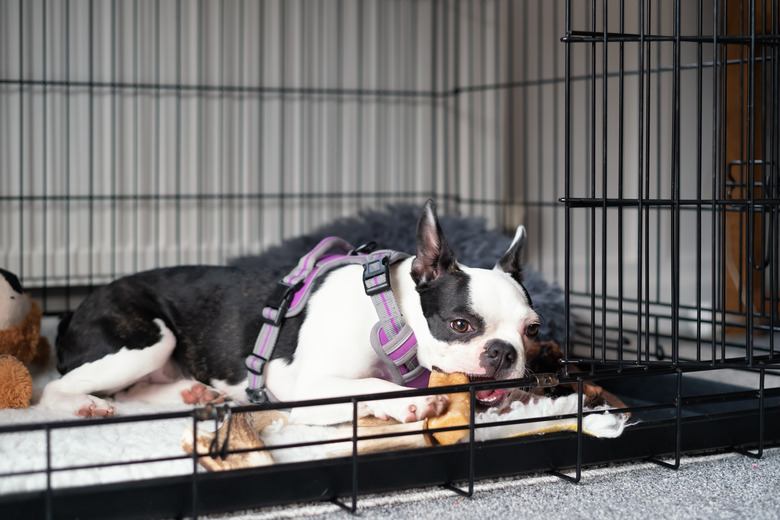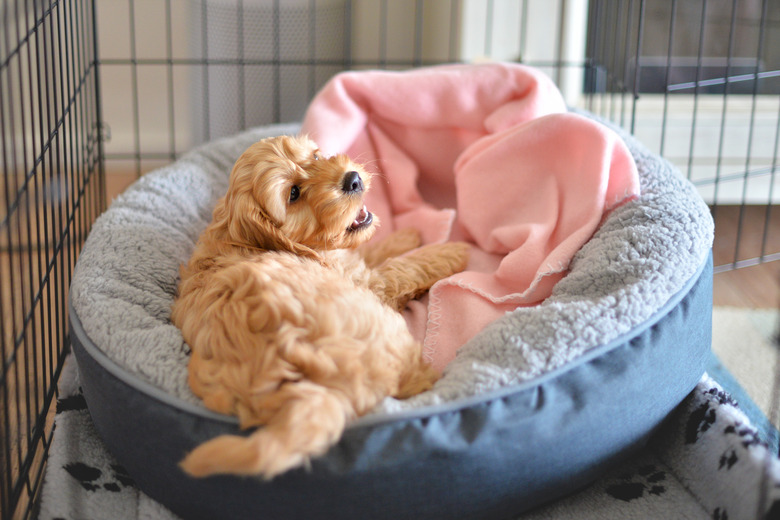Do I Have To Crate Train My New Dog?
One of the most important tasks any new dog parent undertakes is training their new best friend. The task of transforming your lovable puppy into a very good boy can seem almost overwhelming, especially if you are a working pet parent. Crate training your dog can be a good place to start in the training process.
Do I have to crate train my dog?
Do I have to crate train my dog?
No, you do not have you crate train your dog. Some dogs benefit from crate training and some dogs do not. Although crate training potentially has many benefits, a dog who is severely afraid of the crate or has strong negative associations with the crate can experience more harm than good from being forced to use a crate. It's best to work with a qualified, certified dog trainer to determine how, or if, to use a crate in your dog's life.
If you do choose to crate train your dog, do so using positive reinforcement training only, and never use the crate as a punishment.
The benefits of crate training your dog
The benefits of crate training your dog
Crate training your dog does have benefits. Namely, it allows dog parents the security of knowing that your dog isn't getting into any kinds of trouble, such as destroying furniture or ingesting items from the garbage, while you are away or out of the room. Crates can also be used for safety reasons, such as having small children or elderly guests who could potentially be injured by a dog jumping on them.
Teaching your dog to use a crate can also help with potty training, although this should also be done under the advisement of a trusted, qualified trainer.
Are crates cruel to dogs?
Are crates cruel to dogs?
When used correctly, crates are not cruel to dogs. Like most tools, they have the potential to be cruel if used as punishment or if any force is employed. To use a crate correctly, you and your dog trainer will use positive reinforcement to give your dog positive associations with the crate, and ideally, teach them that the crate is a nice, safe and cozy place with pleasant things inside.
Watch how to properly crate train using positive reinforcement, from trainer Grisha Stewart, MA, CPDT-KA, KPACTP:
Even if your dog genuinely enjoys their crate, remember that they should not spend large periods of their time in the crate. It is very important to make sure that your dog is not left alone for extended periods.
In addition, it's important to make sure your dog's other needs are met before crating them at any time. Before putting your dog in their crate, make sure they have had enough activity, the proper amount of food for the time of day, and have recently used the bathroom outside.
Choosing the right size dog crate
Choosing the right size dog crate
Choosing the right size crate is essential. Choose a crate large enough for your dog to stand, lay down, turn around, and play with toys. If your dog is still growing, it should be able to accommodate your dog's full grown size. There are many different types of crates to choose from. If you are overwhelmed by the choices, this is a great question to ask your trainer.
What are the potential problems with crate training?
What are the potential problems with crate training?
If your dog is particularly or suffering from separation anxiety, crate training won't help. It may stop your dog from destroying your stuff, but the dog is more likely to injure themselves trying to escape from the crate. Both separation anxiety and general anxiety are issues that should be treated separately, by a qualified trainer and possibly a veterinary behaviorist if necessary. Do not attempt to treat them with crate training.
More generally, some dogs simply do not like crates. This may be due to existing negative associations with crates (created either intentionally or unintentionally by past handlers) or a number of other fears, anxieties or other issues. Your trainer can help you figure out whether your dog is a good candidate for crate training, but it's also a good idea to get acquainted with dog body language. Keeping a careful eye on your dog's body language around the crate can give you insights into how they are feeling about it.
When in doubt, err on the side of not forcing your dog into the crate, and wait for your trainer's advice if your dog seems nervous or afraid.
Are there alternatives to crate training?
Are there alternatives to crate training?
Yes, there are alternatives to crate training! If you need to keep your dog safely confined in one spot for a period of time, you can use management techniques like baby gates and other supplies to create dog-safe areas where your dog won't get into trouble. Work with a qualified dog trainer on this to ensure your dog is safe, content and free from excessive stress.
The bottom line
The bottom line
You do not have to crate train your dog. There are alternatives to crate training, and a qualified trainer can help walk you through them. Crates are not inherently cruel to dogs, but should never be used as punishment. If you do choose to crate train, take care to do so in a way that minimizes stress for you and your dog. When in doubt, ask your trainer!



